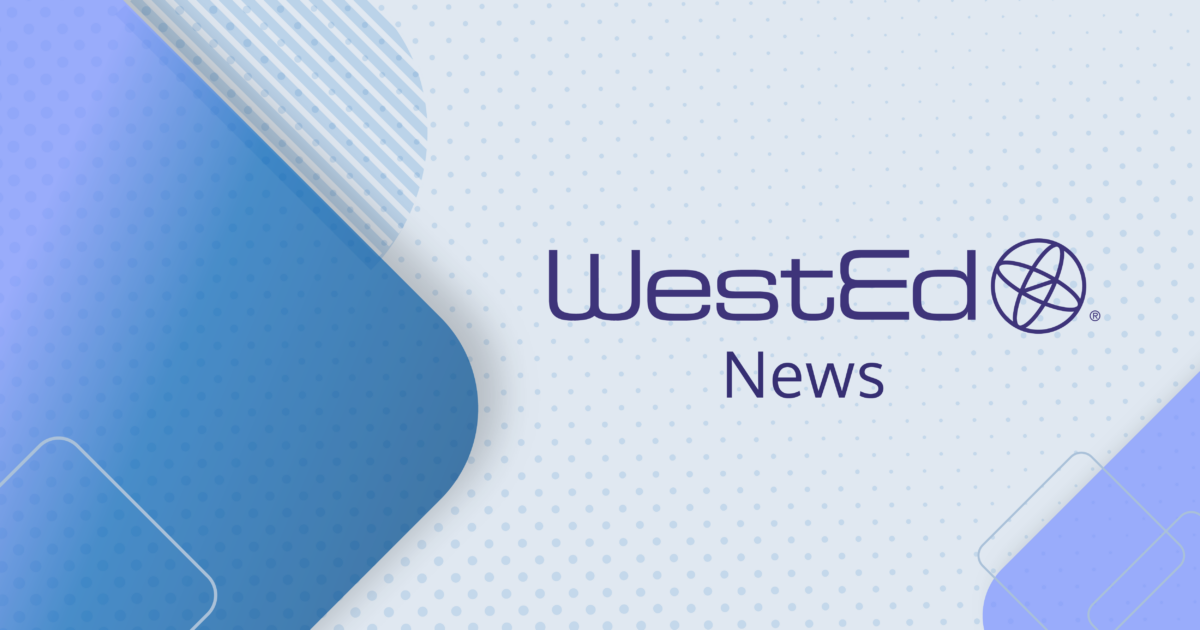WestEd to Lead Federal Comprehensive Center Serving the Bureau of Indian Education
Posted on

WestEd was selected to lead the Region 14 Comprehensive Center (R14CC), which, for the first time, the U.S. Department of Education has dedicated to solely serving the Bureau of Indian Education (BIE), a federal agency responsible for managing educational services for Native American and Alaska Native students.
The federal Comprehensive Centers provide technical assistance and capacity-building services to state educational agencies (SEAs), districts, and schools to improve educational outcomes for students, close achievement gaps, and improve the quality of instruction. Though the BIE is not a state, it functions as an SEA to administer the programs under the Elementary and Secondary Education Act and receive technical assistance.
As the Comprehensive Center solely focused on serving the BIE, the R14CC will, in the 2024–29 cycle, support the bureau itself and the 183 Tribally controlled, BIE-operated, and Navajo schools it serves. Collectively, these schools educate 42,000 Indigenous students across 64 reservations and 23 states.
Through capacity building and technical assistance, the R14CC, in collaboration with the BIE, will work to improve operational coherence, student data systems, principal leadership, and student-centered achievement and support the bureau’s evolving priorities. R14CC will also provide support as the BIE launches its new strategic plan later in the fiscal year.
Having previously led the Region 13 Comprehensive Center, which partnered with the BIE and SEAs and their regional and local constituents in New Mexico and Oklahoma, WestEd has provided support and services to the BIE since 2019.
“We are pleased and honored to lead the 2024–29 Region 14 Comprehensive Center: to collaborate with the bureau and provide tailored supports that lift up quality schools to meet Tribal community needs,” said Robert Salley, who will serve as the director of the Region 14 Comprehensive Center.
Salley worked closely with the BIE as the Region 13 Comprehensive Center deputy director during the 2019–24 cycle.
“This arc of work: to support so many Indigenous cultures and philosophies over thousands of miles with research, data, resources, and assistance,” said Salley, “stands to not only benefit generations of Native students but to advance sovereign tribal Nations themselves.”
WestEd continuously partners with Tribal nations, American Indian Education Directors in SEAs, Tribal schools, and public school systems to improve opportunities and outcomes for Indigenous youth.
Most recently, WestEd-led Regional Comprehensive Centers served the four states that, according to Census data, have the highest number of American Indians: Arizona, California, New Mexico, and Oklahoma.
WestEd is partnering with Abt Global and the University of Virginia to deliver services through the R14CC, which began its five-year term on October 1, 2024.
About WestEd
WestEd is a nonpartisan, nonprofit organization that aims to improve the lives of children and adults at all ages of learning and development by addressing challenges in education and human development, reducing opportunity gaps, and helping build communities where all can thrive.
About the Bureau of Indian Education
The Bureau of Indian Education’s mission is to provide quality education opportunities from early childhood through life in accordance with a tribe’s needs for cultural and economic well-being, in keeping with the vast diversity of Indian tribes and Alaska Native villages as distinct cultural and governmental entities.
About Abt Global
Abt Global is an engine for social impact, fueled by caring, curiosity, and cutting-edge research that moves people from vulnerability to security.
About the University of Virginia
The University of Virginia is a public university designed to advance human knowledge, educate leaders, and cultivate an informed citizenry.
About the Comprehensive Centers program
The Comprehensive Centers program supports the establishment of Comprehensive Centers (CCs) to provide capacity-building services to state educational agencies (SEAs), regional educational agencies (REAs), local educational agencies (LEAs), and schools that improve educational outcomes, close achievement gaps, and improve the quality of instruction for all students, and particularly for groups of students with the greatest need, including students from low-income families and students attending schools implementing comprehensive support and improvement or targeted or additional targeted support and improvement activities under section 1111(d) of the Elementary and Secondary Education Act of 1965, as amended (ESEA).
